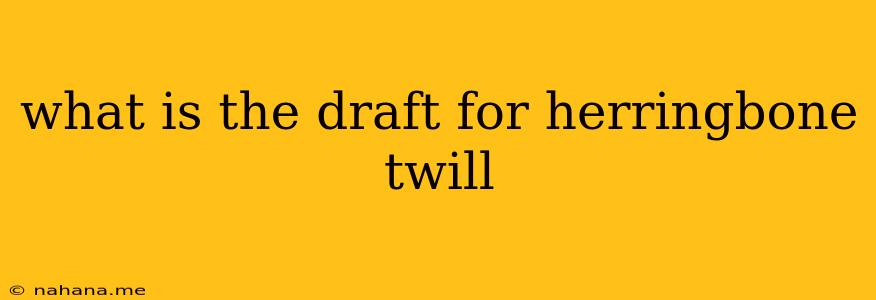Understanding the Basics of Herringbone Twill
Herringbone twill is a classic woven fabric known for its distinctive V-shaped pattern that resembles the bones of a herring fish. This unique look is achieved through a specific weave structure, which we'll explore in this article.
The Draft: A Blueprint for Weaving
The draft for a fabric like herringbone twill is essentially a blueprint that outlines how the warp and weft yarns interlace to create the finished fabric. It's a visual representation of the weave structure, and it's crucial for weavers to understand how to interpret and use it.
The Herringbone Twill Draft
Here's a simplified explanation of how to read a herringbone twill draft:
- Warp Yarns: These are the lengthwise yarns that run the length of the fabric. They are typically represented by vertical lines on the draft.
- Weft Yarns: These are the crosswise yarns that interlace with the warp yarns. They are typically represented by horizontal lines on the draft.
- Interlacing Pattern: The draft shows the specific pattern in which the warp and weft yarns interlace. In herringbone twill, the interlacing pattern creates a repeating "V" shape.
Key Features of a Herringbone Twill Draft
- Alternating Direction: The "V" shapes in herringbone twill alternate direction in each row, creating a balanced and visually appealing pattern. This alternating pattern is reflected in the draft.
- Float: The draft also reveals the float length, which refers to the number of warp or weft yarns that a single yarn "floats" over. In herringbone twill, there will be short floats, creating a dense and durable fabric.
Understanding the Draft: Benefits for Weavers
The draft for herringbone twill is valuable for weavers because it allows them to:
- Plan the Weaving Process: They can visualize the weave structure and determine the required yarn quantities and weaving techniques.
- Predict the Fabric's Properties: By understanding the draft, weavers can anticipate the texture, drape, and weight of the finished fabric.
- Experiment with Variations: The draft can be modified to create variations in the herringbone pattern, such as wider or narrower "V" shapes.
Conclusion
The draft is an indispensable tool for understanding and creating herringbone twill fabric. By studying the draft, weavers gain a deeper appreciation for the intricate weave structure and its impact on the final fabric. Whether you're a seasoned weaver or a curious beginner, understanding the draft is the first step to mastering this timeless textile design.
